The capital of Ladakh is called Leh, the largest city in the region and a trading post on the ancient Silk Road. It is located in northern India, in a valley of the Himalayas not far from 7,000-meter peaks and some of the highest lakes in the world.
The landscape of Ladakh changes gradually throughout the year, but if there is one color that stands out and that we cannot forget, it is the white of the snow and the mountains in winter.
Popular for its trekking routes, a challenge for climbers and a remote point on the map that those who want to know everything about the great Asian subcontinent wish to reach, Leh could not be less similar to the rest of the country, adorned with stupas, temples and gompas, since Buddhism is the predominant religion in the region.
This remote corner of India won us over in a few minutes,and with this guide we want to convince you to take the long road to get there and, with a bit of luck, even cross a pass. Will you give us a chance?
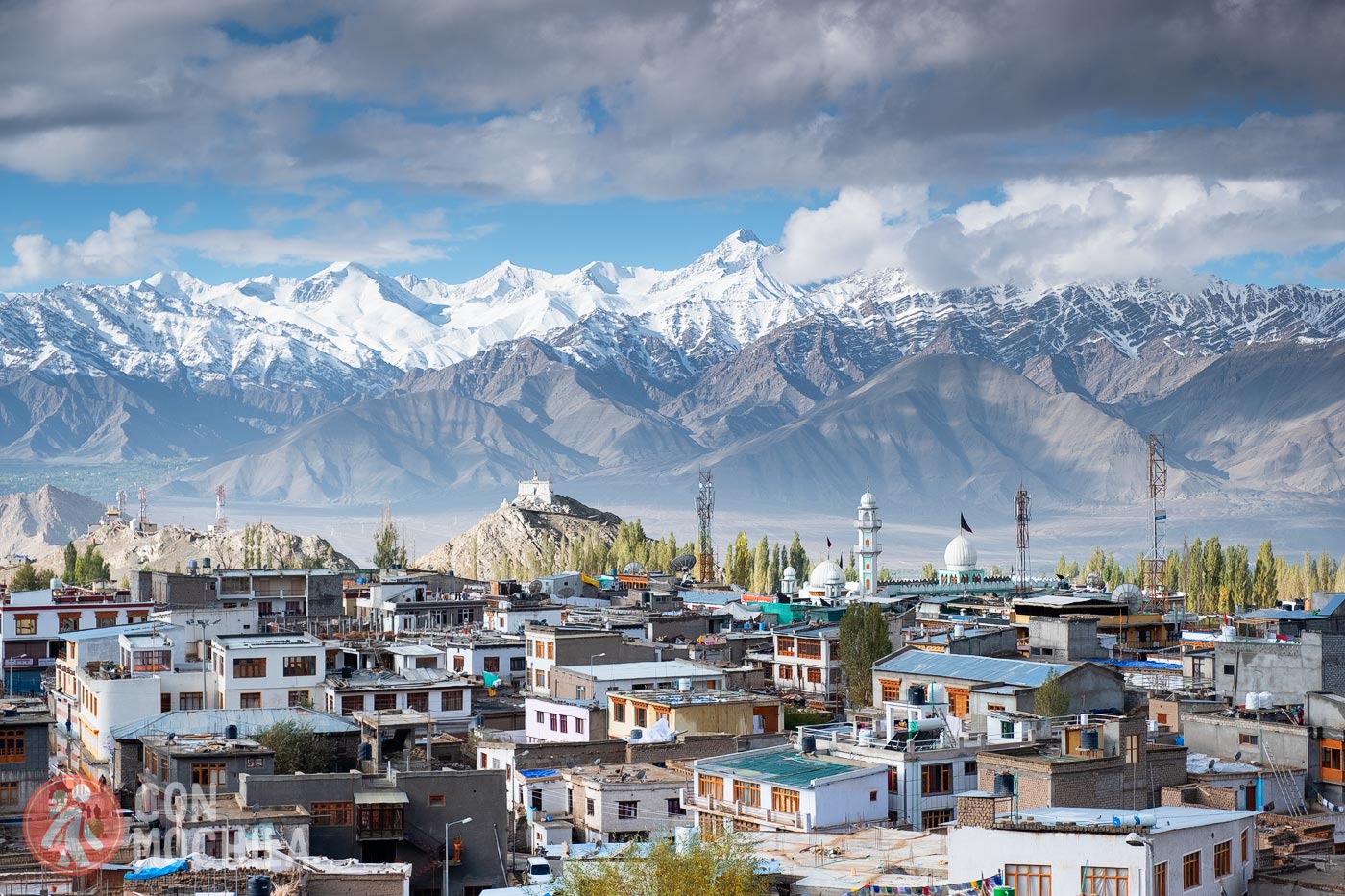
Wherever you look and from almost any part of Leh, you will see mountains and more mountains. Some of the most spectacular viewpoints are at the top, where there is always a palace, castle or temple. Take it easy and explore the city without rushing, don’t let the altitude take its toll on you. Rest, drink plenty of water and don’t push yourself.
May to October is the best time to visit Leh, as temperatures are very pleasant and roads are usually open.
We know that the subject of visas can be somewhat confusing, especially for India, where obtaining one is an essential requirement for entry. In the article on how to obtain an Indian visa step by step (coming soon) you have information on how to apply for one online for up to 5 years.
It’s essential to travel to India with comprehensive insurance. We were among the first to offer the popular IATI discount, and you can now get it with Heymondo Travel Insurance as well.
You can find more information about both companies through the links provided above, or you can access the discount directly using the buttons below (in both cases, you’ll see the reduced final price on their website):
While many hotels, guesthouses, and restaurants in India offer free Wi-Fi, some travelers prefer or need a constant connection. We’ve included details on obtaining a eSIM India card with unlimited data (from Holafly) or with fixed data but cheaper (from Saily).
If you want to get it directly, here’s the link (with a discount) for both companies:
Unlike other areas of India, getting to Leh is not that easy, as it is a remote and mountainous area and there are not too many options. Here are a couple:
It is not easy to get there by road, especially in the winter season, when the way is often closed for months. The most logical and normal option is to get to Manali and once there take a bus, taxi or 4×4 to take you to Leh.
It is a route that we recommend doing in at least 2 days (better from 3 onwards). In addition to the fact that it is more than 10 hours of road in normal conditions, the altitude can play a trick on you. You will reach 5100 m, so altitude sickness can appear and ruin your trip. Be careful and use your head.
There are daily flights from Delhi, but due to the geography of the area, weather can influence the airline’s decision to go or not. Due to a storm, our flight was canceled on one occasion, so we had to wait to leave the next day. That’s why it’s so important to take into account the time of year you’re going to travel to Ladakh, especially if you have little time.
The Leh palace is almost as dilapidated as the road that leads to it, even though it was once a symbol of Ladakh’s strength. Also known as the “Glorious nine storey castle”, it is somewhat reminiscent of the Jodhpur fort, although it has nothing to do with it.
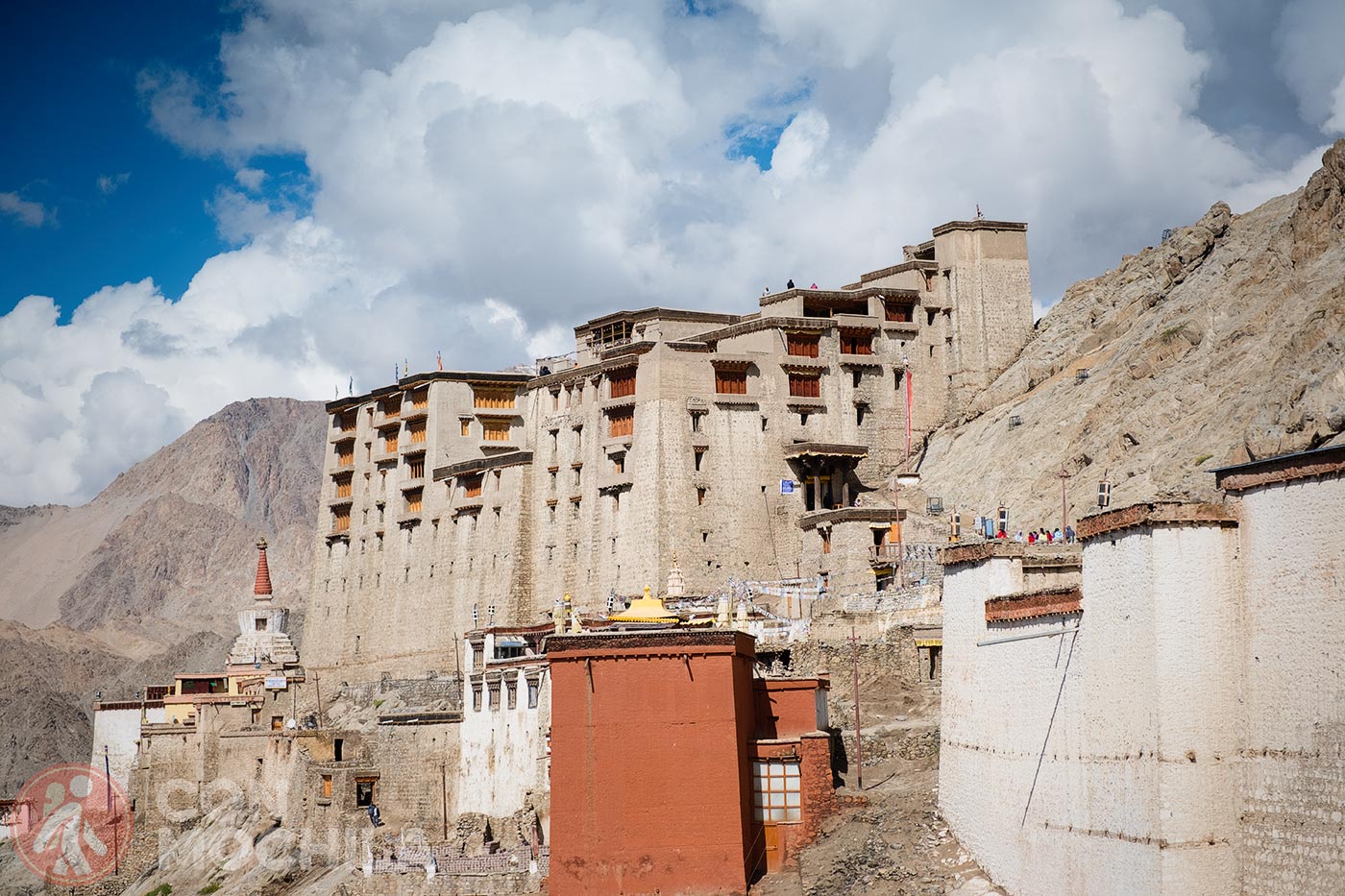
Inside there is nothing but dust, and from the outside it is not a beauty either. However, it is worth paying the 300 rupees just for the panoramic view from the terrace, where you will want to stay for a while if the sun comes out.
Chowkhang Vihara Gompa was built in 1956 in honor of the 2500th anniversary of Buddha. Situated parallel to the marketplace, this monastery is one of the best places to visit on your first day in Leh, as you don’t have to climb too high to find it and it will come in handy if you are noticing the first symptoms of oxygen deprivation.
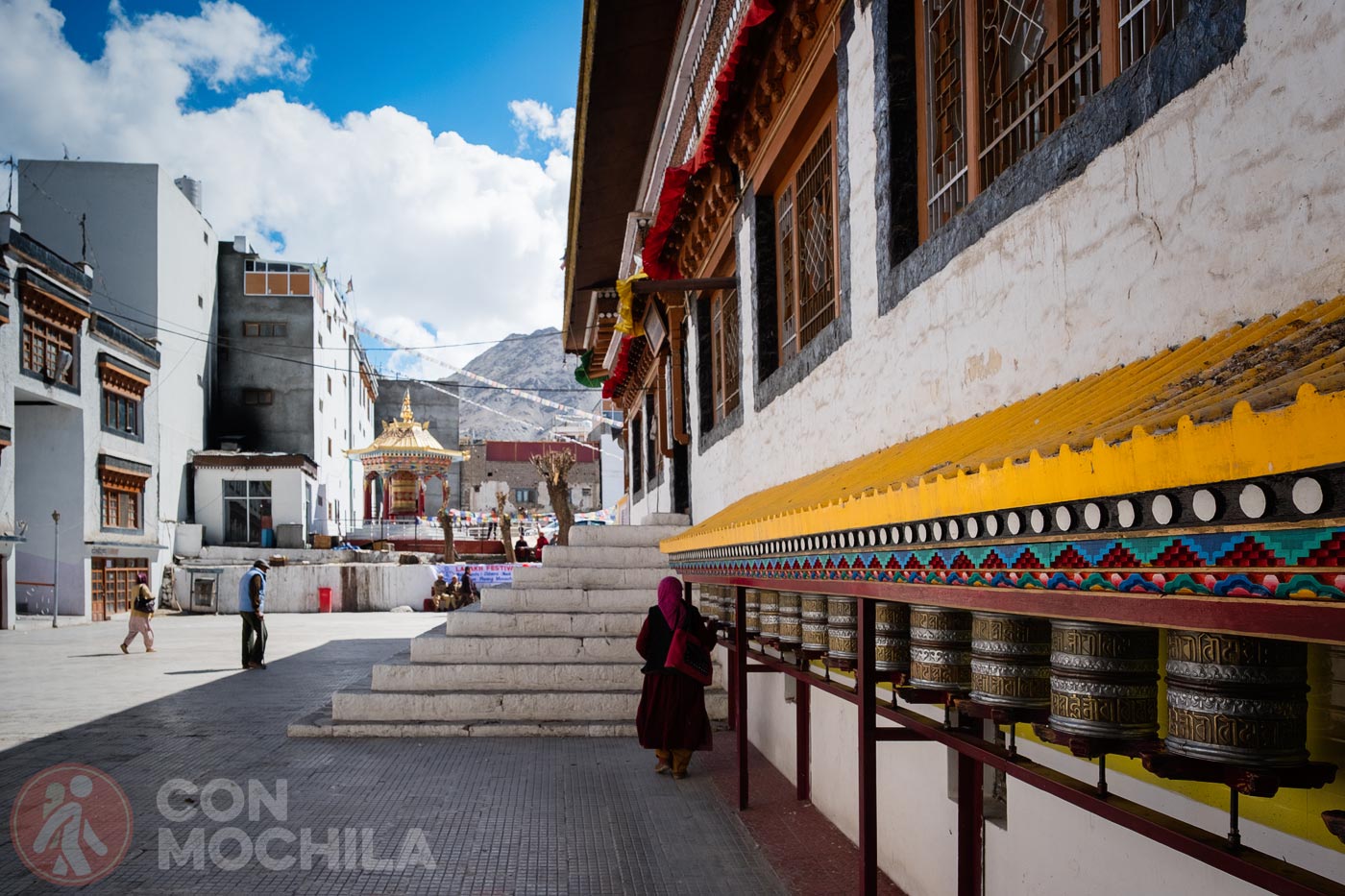
Eighty-nine prayer wheels surround the central building with the mantra of compassion engraved on them, rotating them clockwise while repeating “Om mani padme hum”.
A steep zigzag path leads up to Tsemo Castle, the highest point in Leh. Also known as Namgyal Tsemo, this now ruined building was built by King Tashi Namgyal in the 16th century and houses a temple with an eight-meter statue of Maitreya (the next Buddha).
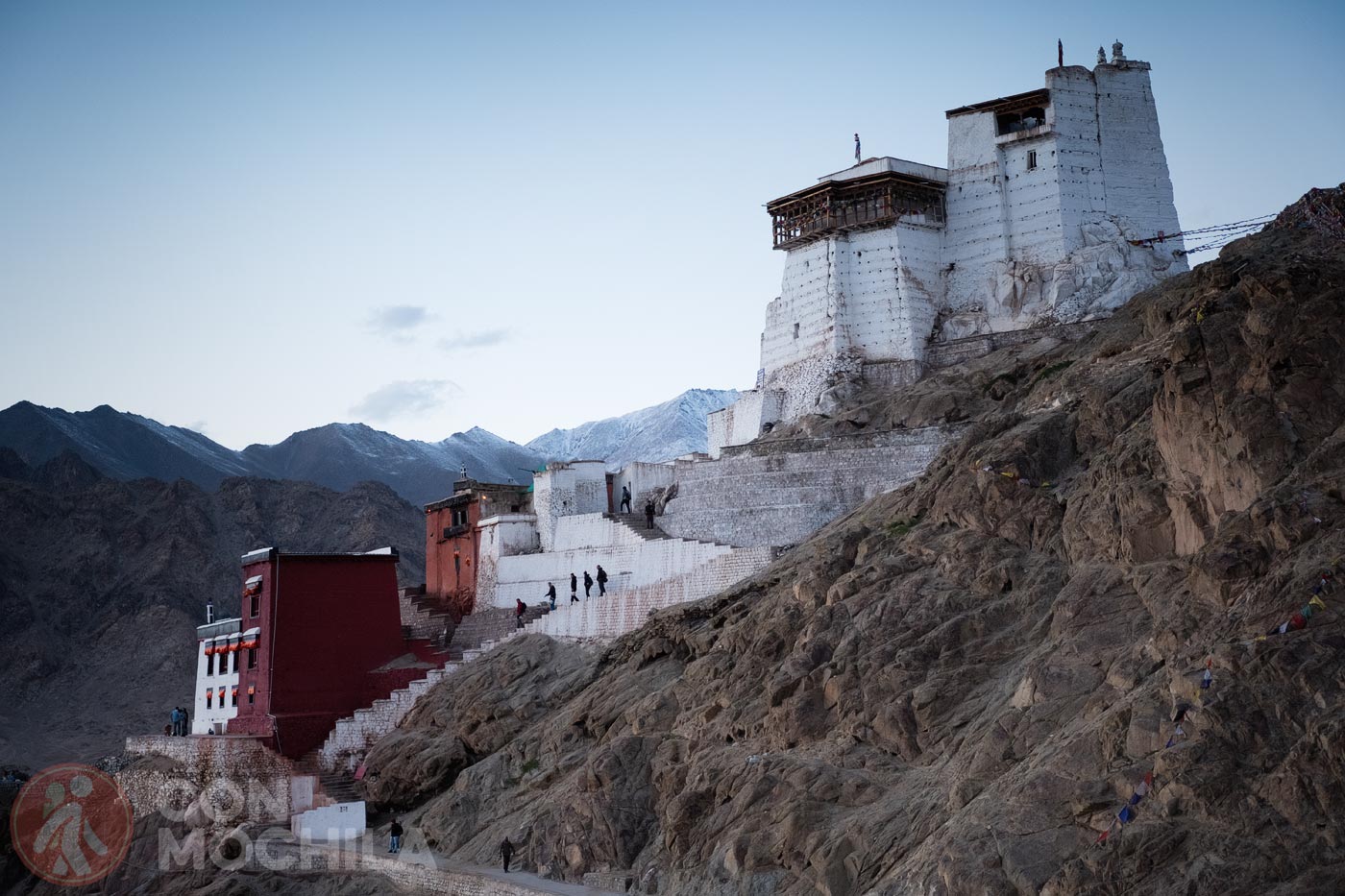
Wait a couple of days to get there because the climb is a bit tough, despite the beautiful views and how photogenic it is thanks to the hundreds of prayer flags that decorate the path.
Shanti Stupa is a huge white dome commemorating the 2500th anniversary of Buddhism. It depicts different stages of Buddha’s life and, although the project was started by Japanese Buddhist Gyomyo Nakamura, it was completed by local Ladakhis.
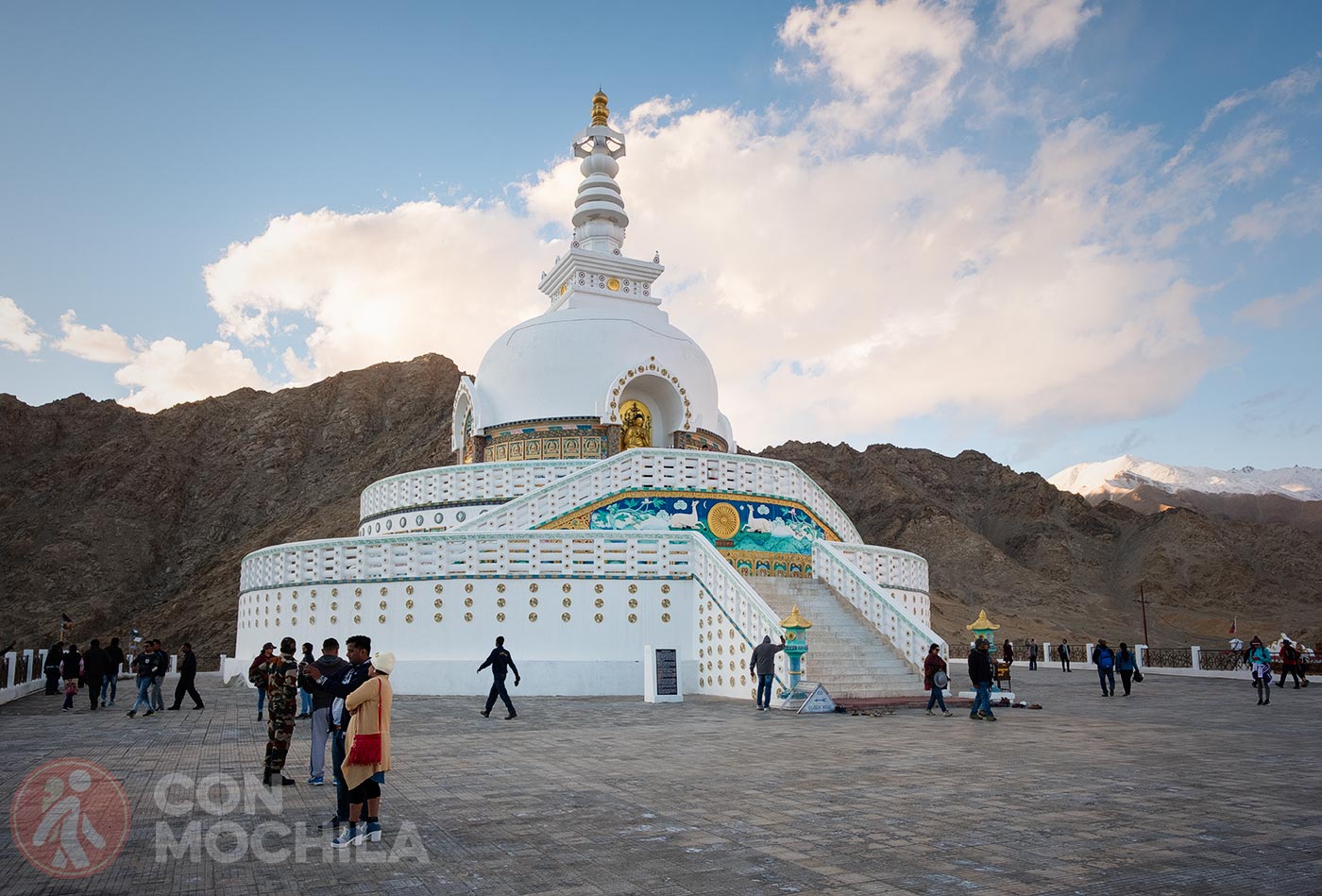
Despite the steepness of the stairs, it is not too difficult to climb up to the gompa, where a lot of people gather at dusk. Take your mobile phone or a flashlight with you in case it gets dark when you start to descend.
In the city center, right at the foot of the Leh Palace, you will find the Main Bazaar, frequented by both Asian tourists and a variety of wildlife, including donkeys. Here you can buy typical Ladakh clothing or trekking clothes if you are missing some equipment, but you can also entertain yourself by buying souvenirs or trying Indian nuts, which are amazing.
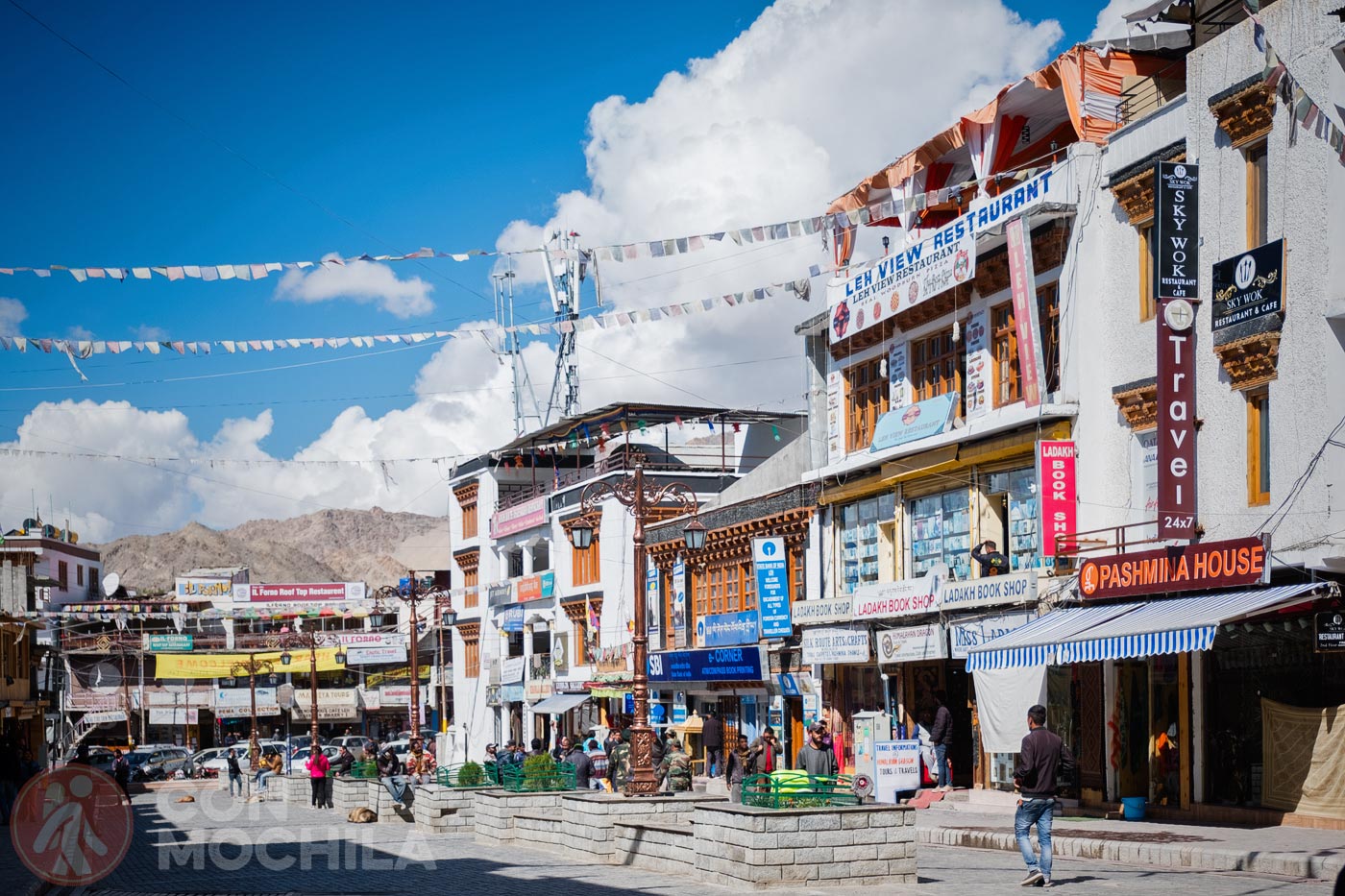
This is the area where you will also find most of the restaurants serving Indian, Nepalese and Tibetan food.
Shey Palace was a royal residence in the 10th century and is considered Ladakh’s first castle. In 1647, King Deldan Namgyal built a new one and Shakyamuni Temple on the same site. But the best thing about this palace is not the building itself, which is falling apart, or even the 12-foot Buddha statue, but the views.
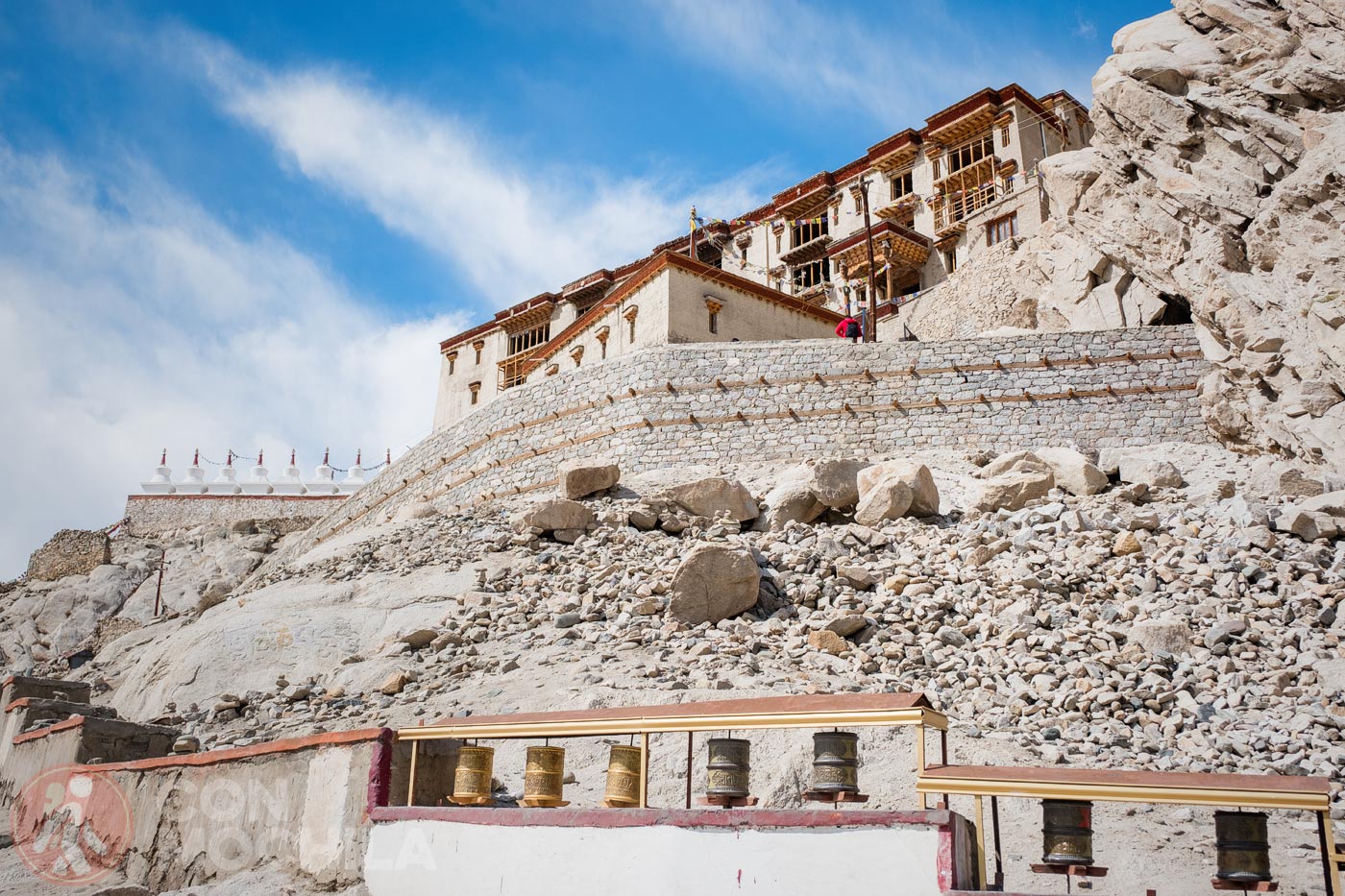
From the balcony you can see the Holy Fish Pond in the fields, and in the distance, again, the Himalayas framing the landscape.
Half an hour from Leh is the monastic complex of Thiksey Palace, which extends over the rocky slope of the mountain and is almost a village. Going up its narrow streets, you will find the temple of Maitrya, the Tara Temple and the Temple of the Protectors.
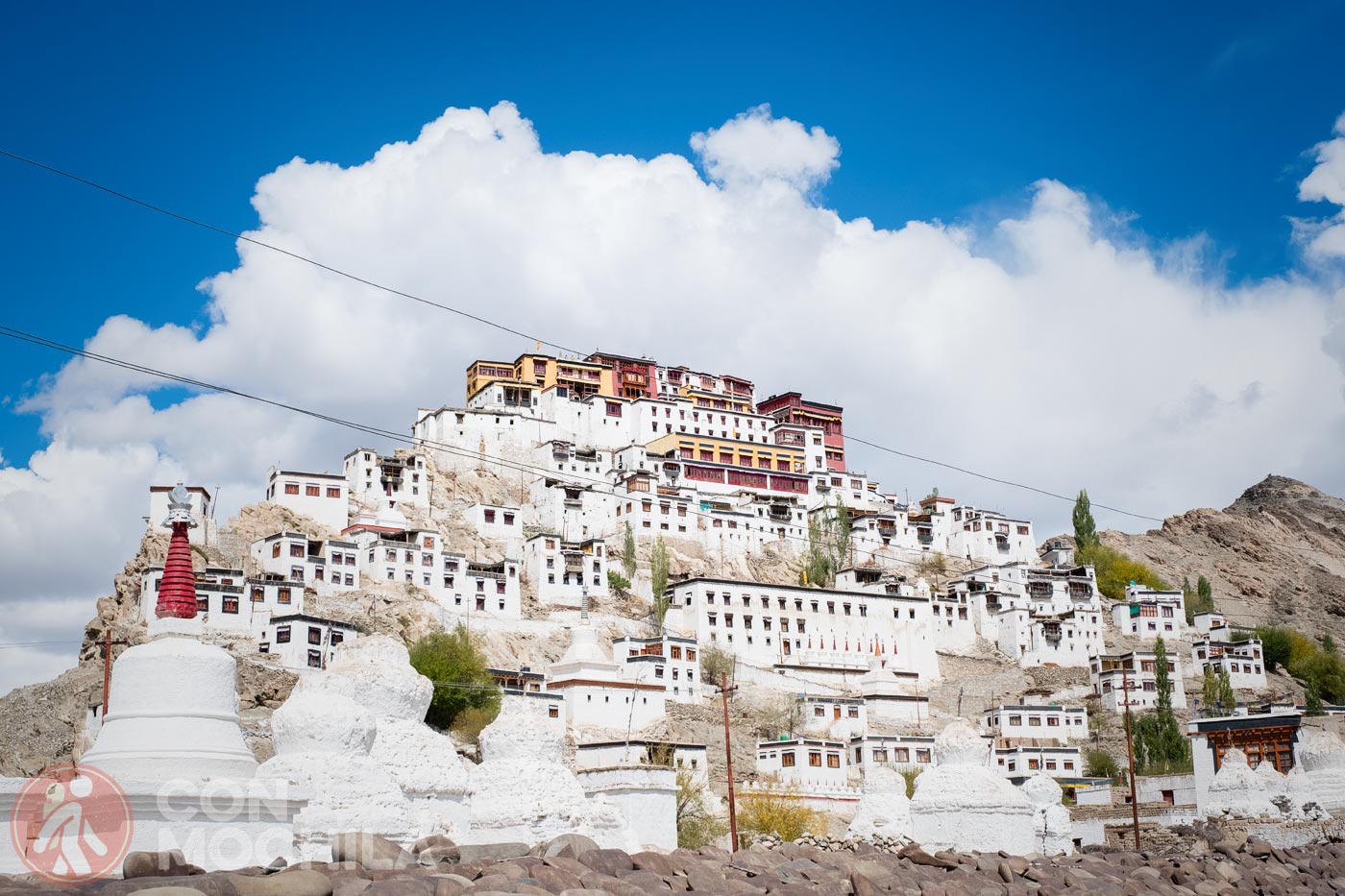
There is a lot of local tourism, and, considering how curious the Indians are, don’t be surprised if someone stops you to ask where you’re from.
Spituk Monastery is located about seven kilometers from Leh and was founded by Od-de, the elder brother of Lha Lama Changchub Od in the 11th century. The monastery overlooks the Indus River, but its interior is also interesting. In the Tibetan prayer hall, there is a statue of Tsongkhapa, the founder of Gelugpa Buddhism.
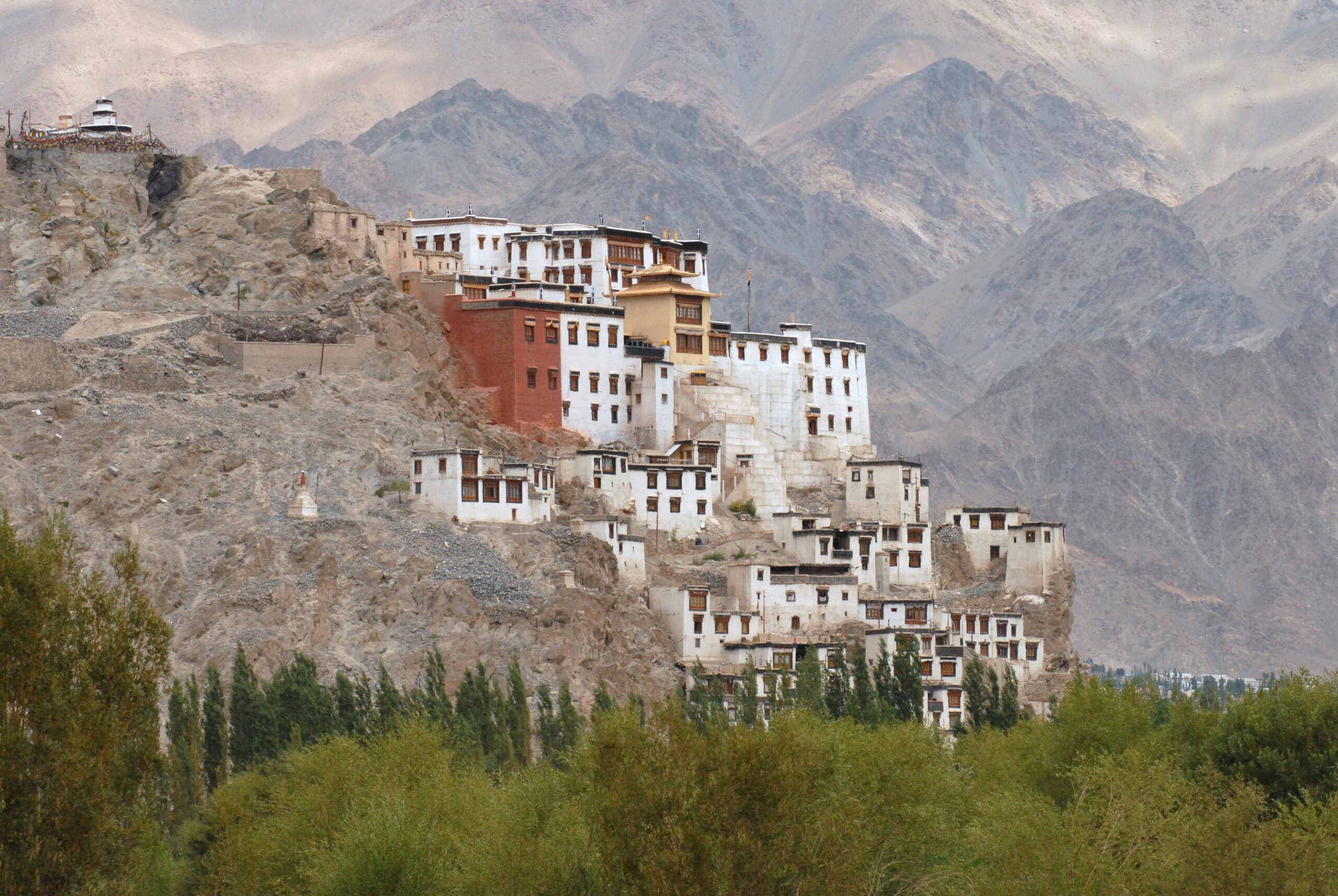
Take advantage of the opportunity to visit on an excursion that includes other points of interest.
Hemis monastery is possibly the most impressive place in Leh and its surroundings. Unlike the ones we have already mentioned, this one is hidden among the mountains, perhaps that is why one is already amazed when arriving at its location, sheltered between steep rock walls. It is believed that the ground is a sacred mandala of Heruka, hence the belief that the land is sacred.
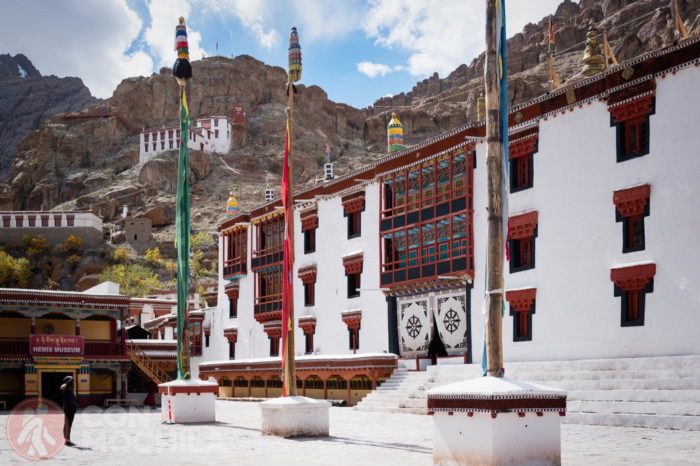
Lamayuru Gompa is one of the oldest in Ladakh, and there are several stories regarding its origins. One of them says that the valley was once filled with water and, when Arhat Nimagon made an offering to the Nagas, it dried up and the temple was built.
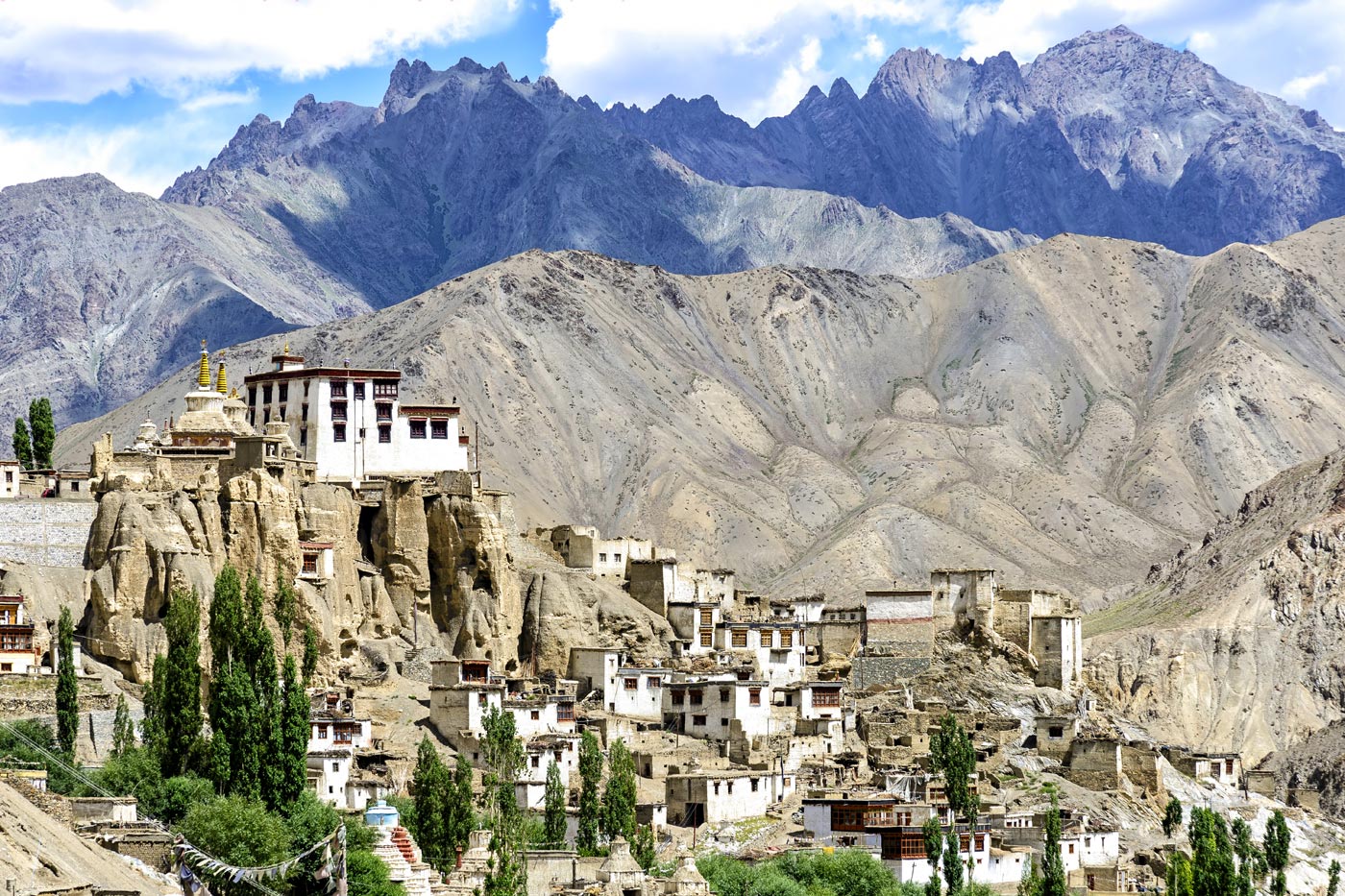
The building is no less spectacular than the legends that tell of it, as it is located on a vertical wall, defying the laws of gravity.
Built in the late to early 16th century, Phyang Gompa is situated on a hilltop overlooking the village below. Its temples have a fine collection of artwork, frescoes, statues and stupas, and the monks at the monastery have a carpentry studio.
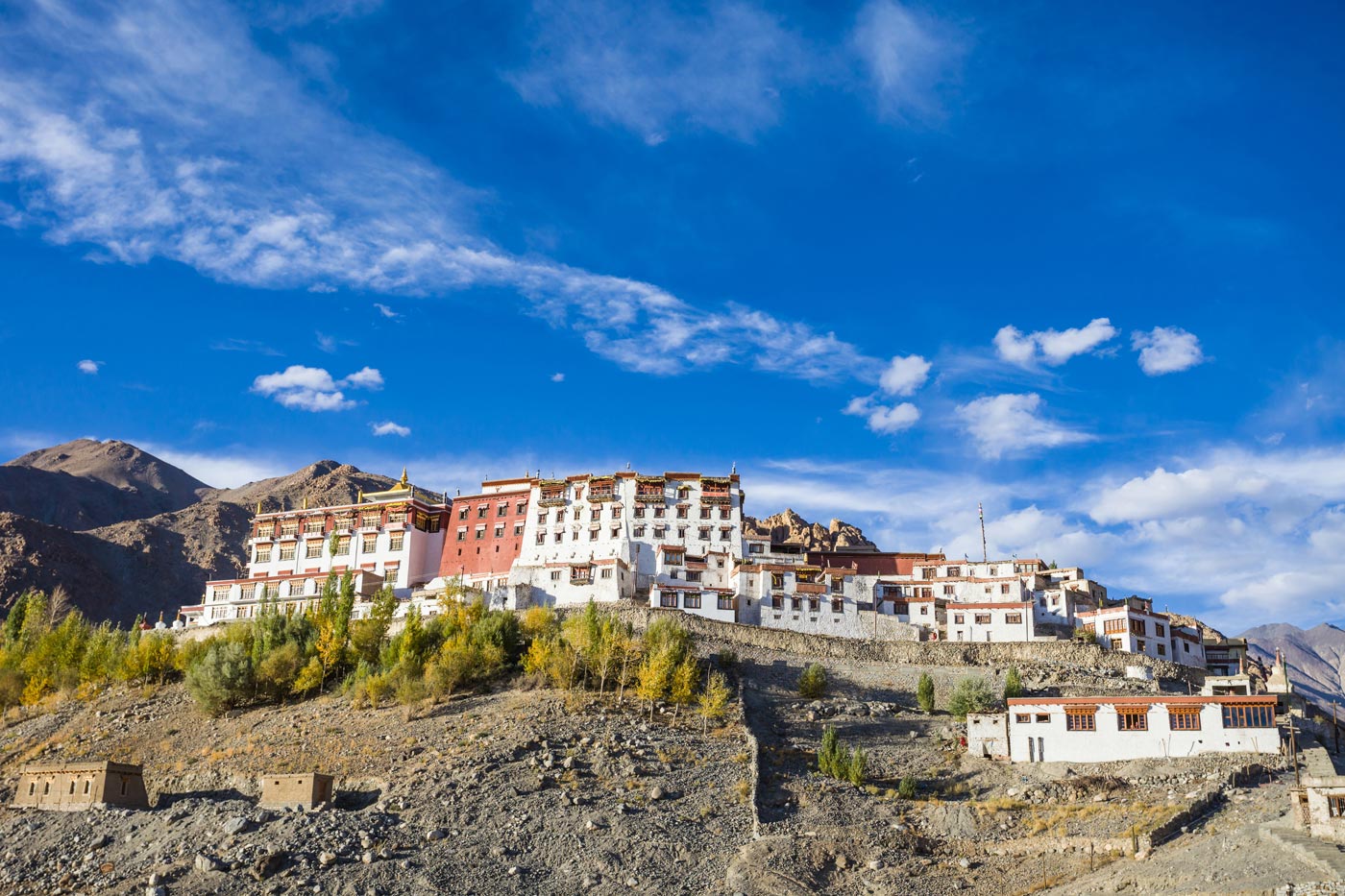
There is a nice path with stupas that you have to walk to reach the temple.
If you like visiting monasteries and exploring the more spiritual side, here is a link to an excursion that may be interesting:
The good memories of the Annapurna trek years ago made us want to set foot in the Himalayas again. This time, the chosen area was the north of India and to go on the Markha Valley trek, a route that includes two mountain passes at more than 4900 meters of altitude and that made us know our own physical limits.
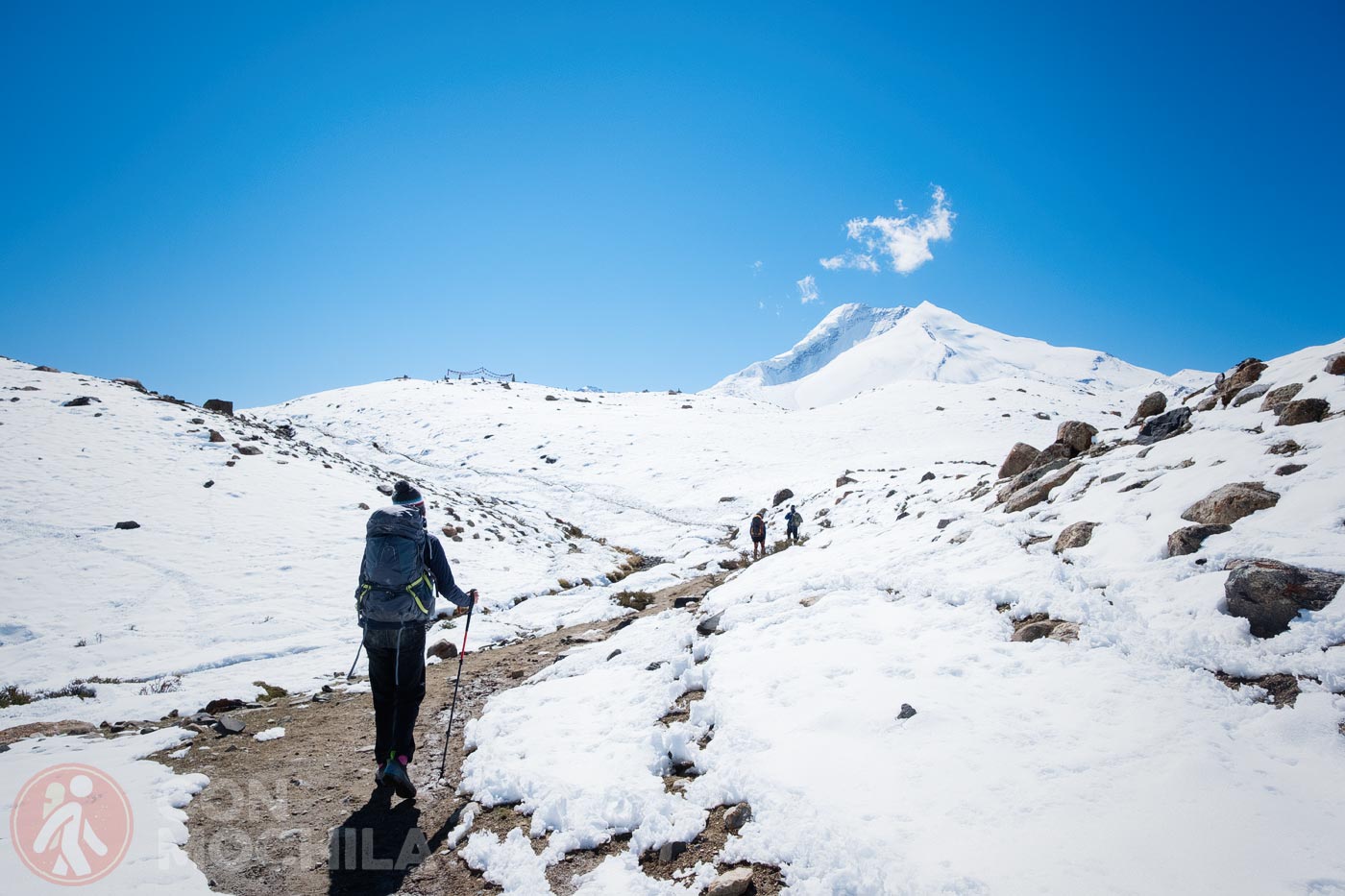
But this is not the only route in Ladakh, since there are different levels and days of duration: Kharnak, Tsarab Chu, Round Sultanlango… Do a little research and choose the one that best suits you.
If there is something we really want to do, it is to tour the Ladakh Valley on a motorbike, a very popular activity among those who are not afraid of curves or Indian traffic, an adventure that is certainly on par with a motorbike tour through Vietnam or a Royal Enfield in southern India.
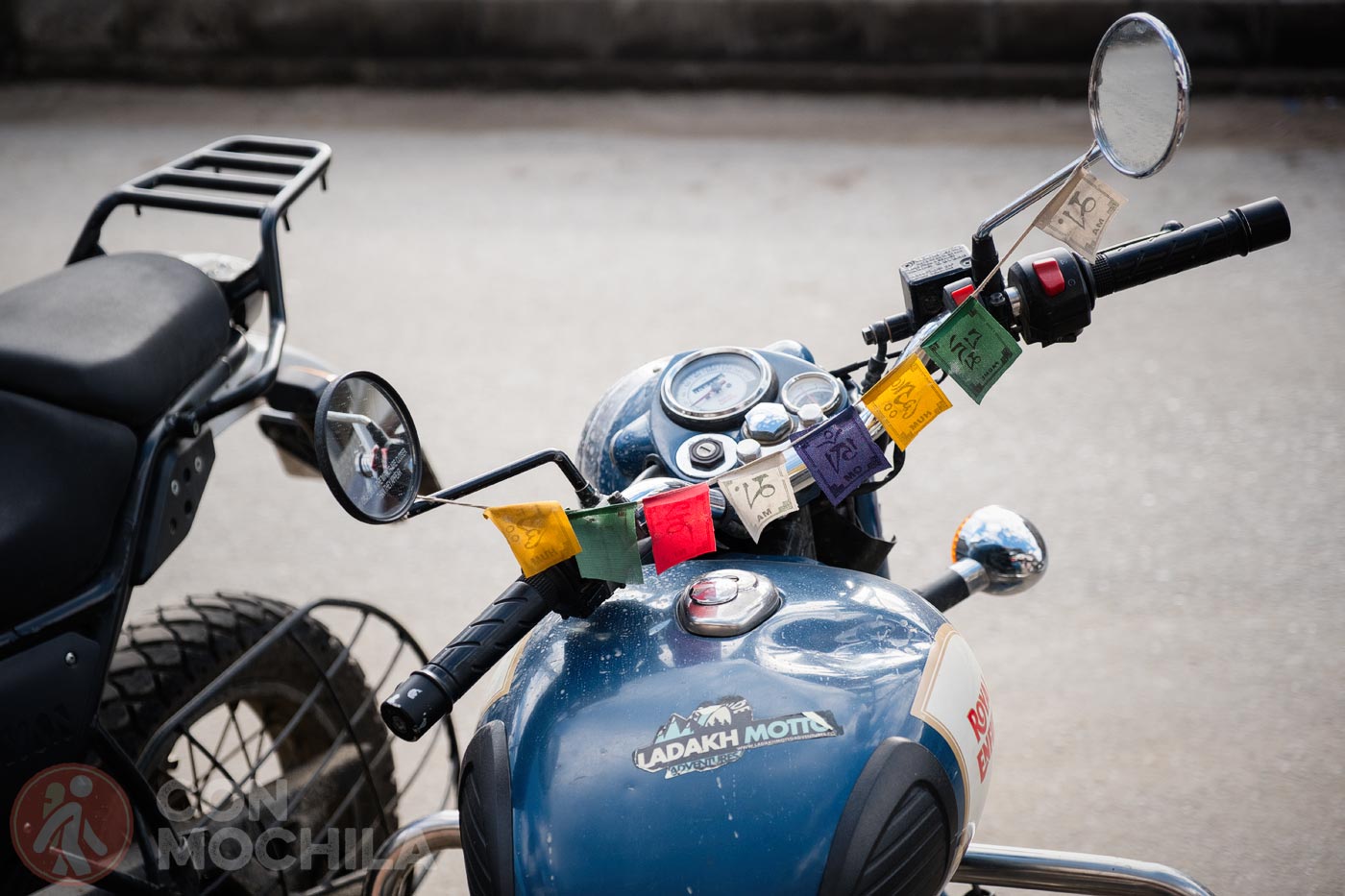
There are countless agencies in the center of Leh where you can rent one of these motorbikes; you will see them everywhere with their tiny prayer flags hanging from one side of the handlebar to the other.
If you don’t dare to take the motorbike but still want to see the valley, you can try a car tour to pass through one of the highest motorable roads in the world, the Khardung La Pass, at over 5,000 meters above sea level.
Depending on the time of year you visit Leh and the weather conditions, you may be able to do some of the following activities. Rafting down the Zanskar River is one of the most popular if you are brave enough to take on the currents and not afraid of the cold water of this tributary of the Indus River.
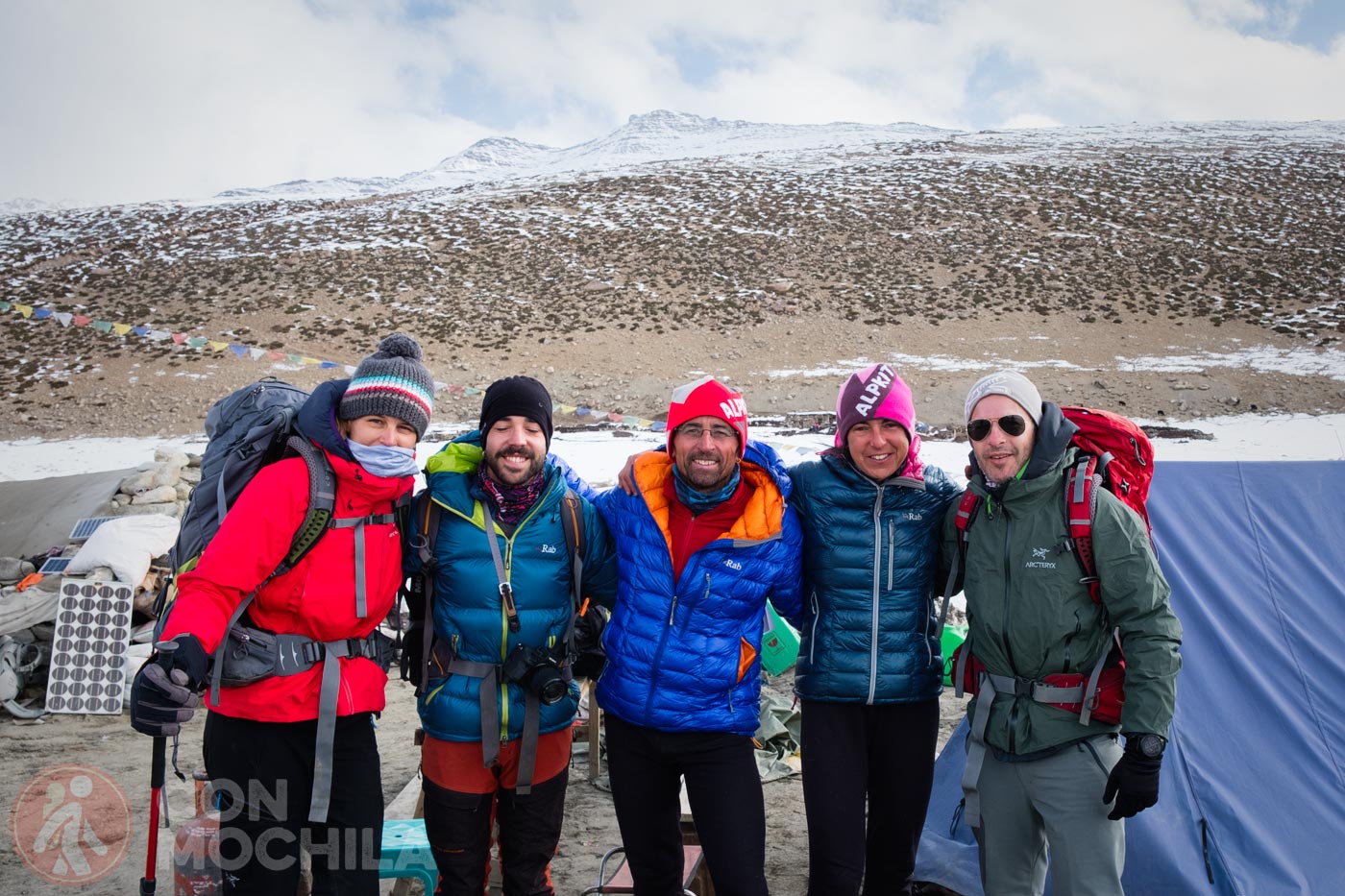
You can also go downhill by bike or snowboard in the dunes in Hunder. However, if you are into climbing peaks, Daniela and Paulo will surely tell you more interesting things than we can.
The main protagonist of this section is the snow leopard, a shy and extremely difficult to spot feline that we deeply admire. However, there are many species that can be found in this area of the Himalayas.
We were drooling when we saw the marmots and pikas, we were amazed when we saw the wild goats climbing and we were again surprised when we saw the yaks.
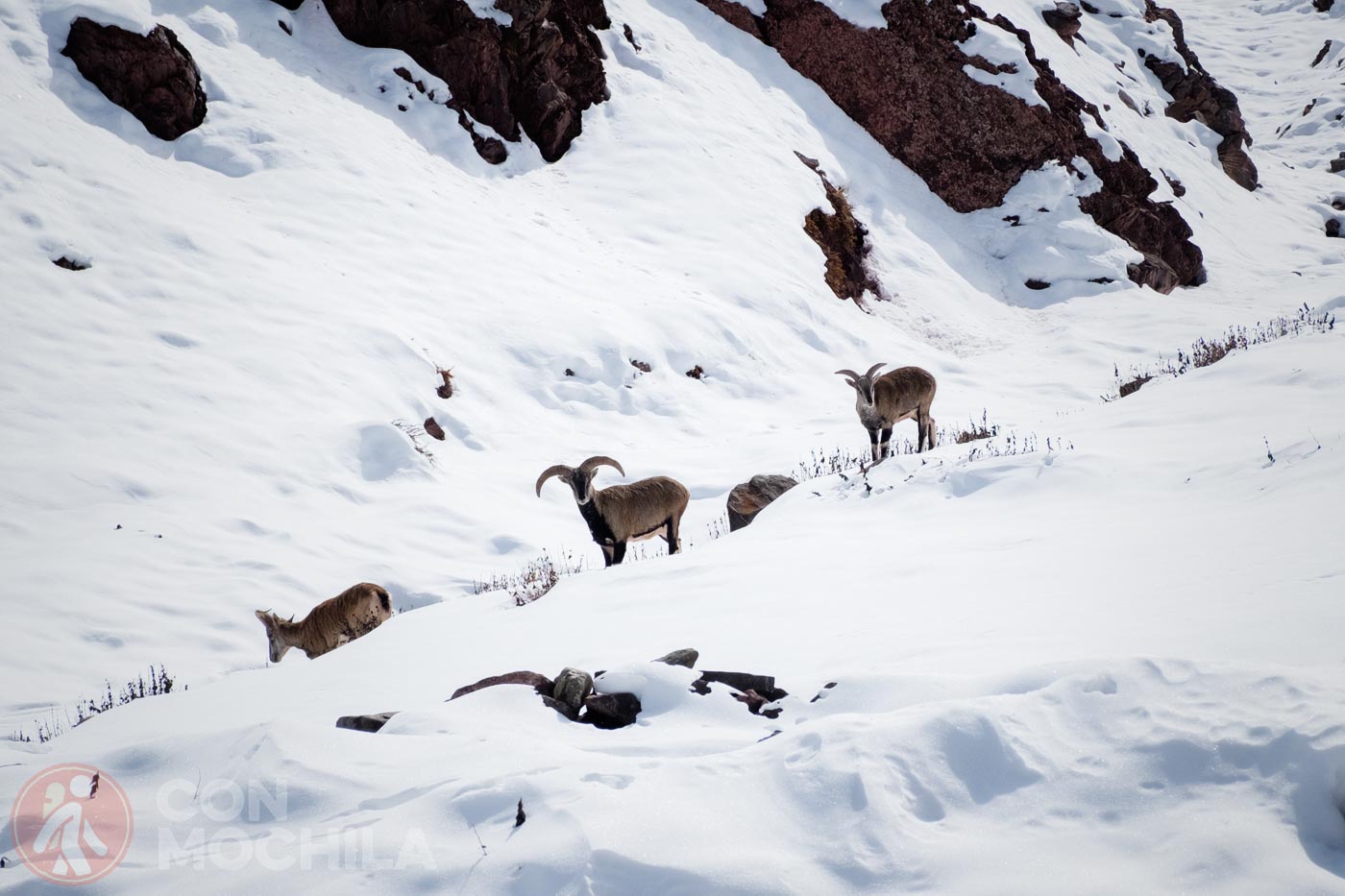
NOTE: Some agencies in Leh organize tours just to see the wildlife of Ladakh.
Lachik guesthouse: That this family has named their accommodation after their daughter gives us a clue as to the kind of people they are. This modest family lives a bit away from the center of Leh, something that can be seen as an advantage due to the hustle and bustle of the busy streets.
Their double rooms are spacious and have huge windows where you will enjoy the sunshine coming through the windows, especially if you visit the city in its colder months. The hostess prepares breakfasts to take there or to take away if you are going to start trekking and her husband does not hesitate to make any call to help you in the preparation of your activities.
You can also take a look at these recommendations:
Whether you have come to Leh to see the city or to do other activities afterwards (especially if you are going trekking and continuing uphill), take a few days to adjust to the altitude. Rest during the first day and then take short excursions visiting the places we have mentioned previously.
Don’t ignore your body, be cautious and get informed; you can read more about this in the article we wrote about altitude sickness.
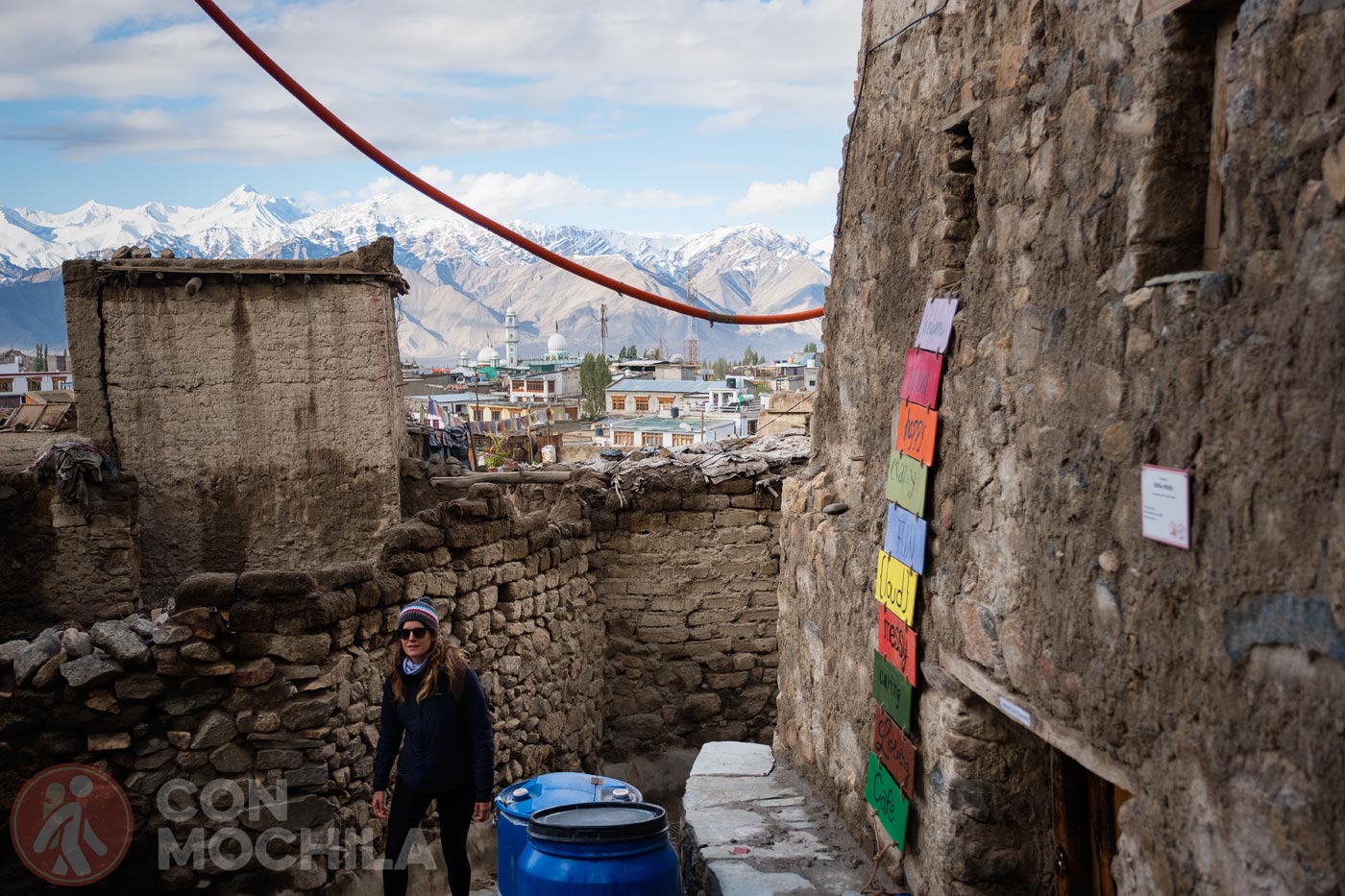
The best option for exploring Leh is on foot. Remember to take into account the altitude, as “walks” can be tiring.
On the other hand, to visit the surroundings or go from one end of the city to the other, taxis are very useful. They are everywhere and you just have to negotiate the price beforehand.
Click on the image and it will take you to a new Google Maps window with all the points of interest to travel around Leh.